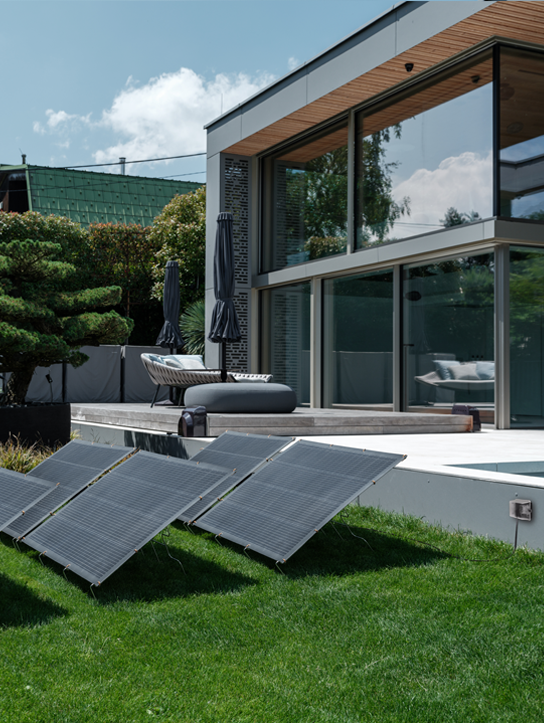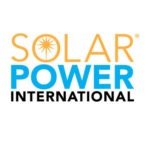
Plug&Play solar solutions are a great alternative to rooftop solar installations, which often cost north of 30,000$. The average price for a solar installation in the US costs 3$/Watt, meaning a 10kW Watt rooftop installation will cost you those 30,000$. The goal is to provide a solution for middle income and disadvantaged households, in light of high up-front or financing costs in the solar industry.
- What does Plug&Play mean?
Plug&play in the context of solar refers to solar power systems that do not require the customer to own a roof or hire a solar installation company. Such systems are designed to plug directly into standard wall outlets. This trend started in Europe and is now also reaching the United States. We at CraftStrom also started our sales journey in Europe, where specific regulations were put in place for this technology. Such regulations are also in the works in the States, though the systems are already safe and legal to run, when using appropriate products. CraftStrom products have been extensively tested and certified for this purpose.
- How does it work?
The solar system itself works as any other. Solar panels convert the sun’s rays into electricity, which is then sent via cables to an inverter. The electricity coming from the solar panels is Direct Current (DC – Click here for more information), so not useful in your household. The inverter changes that DC power to AC power and plugs directly into your outdoor wall outlet. This power can now be directly used by your appliances. Any power your appliances don’t use will feed back into the public grid, unless you use CraftStrom’s PowerMeter. Our systems do not feed power back into the grid. They do this by measuring your power usage every 0.1 seconds and adjusting the solar power output. This is what makes our system permission-free, because, if you don’t export power, you aren’t affecting the public grid. The utility’s authority ends at your home utility meter.
- Is it Safe?
Absolutely, if you use certified equipment and follow the instructions. CraftStrom and our competitors have sold more than 500,000 systems in Germany alone in the past 4 years, without a single incident with certified equipment. CraftStrom products are ETL certified (find our certification here), specifically for UL 1741. This is proof that our inverters turn off automatically, if the power in your home is turned off. This is essential to keep you, electricians, linemen, etc. safe.
- How much do CraftStrom systems cost?
Ask us about current discounts to purchase at only 2$/Watt or even lower. With the government’s tax incentive, this is reduced to only 1.40$/Watt. Lower it even more with local State tax credits. You’ll even be able to reach costs of less than 1$/Watt. Unbeatable with current average prices at around 3$/Watt.
- Does the tax incentive from the government apply to CraftStrom systems?
Absolutely. Here are the few requirements from the Department of Energy’s website:
- Your solar PV system was installed between January 1, 2017, and December 31, 2034.
- The solar PV system is located at a residence of yours in the United States.
- Either:
- You own the solar PV system (i.e., you purchased it with cash or through financing but you are neither leasing the system nor paying a solar company to purchase the electricity generated by the system).
- Or, you purchased an interest in an off-site community solar project, if the electricity generated is credited against, and does not exceed, your home’s electricity consumption. Notes: the IRS issued a statement (see link above) allowing a particular taxpayer to claim a tax credit for purchasing an interest in an off-site community solar project. However, this document, known as a private letter ruling or PLR, may not be relied on as precedent by other taxpayers. Also, you would not qualify if you only purchase the electricity from a community solar project.
- You own the solar PV system (i.e., you purchased it with cash or through financing but you are neither leasing the system nor paying a solar company to purchase the electricity generated by the system).
- The solar PV system is new or being used for the first time. The credit can only be claimed on the “original installation” of the solar equipment.
Here a list of what can be included in this tax rebate:
- Solar PV panels or PV cells (including those used to power an attic fan, but not the fan itself)
- Contractor labor costs for onsite preparation, assembly, or original installation, including permitting fees, inspection costs, and developer fees
- Balance-of-system equipment, including wiring, inverters, and mounting equipment
- Energy storage devices that have a capacity rating of 3 kilowatt-hours (kWh) or greater (for systems installed after December 31, 2022). If the storage is installed in a subsequent tax year to when the solar energy system is installed it is still eligible, however, the energy storage devices are still subject to the installation date requirements). Note: A private letter ruling may not be relied on as precedent by other taxpayers.
- Sales taxes on eligible expenses
For more information, click this link: https://www.energy.gov/eere/solar/homeowners-guide-federal-tax-credit-solar-photovoltaics













